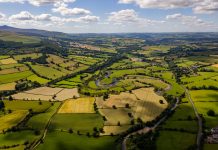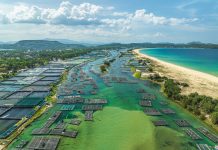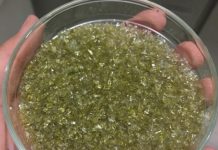Open Access Government addresses salient global environmental challenges, in particular, on the topics of international agriculture, marine and coastal protection
The United Nations Environment Programme (UNEP) is the global authority on environmental issues, dedicated to improving the quality of life while safeguarding future generations. For over 50 years, UNEP has collaborated with governments, the private sector, and civil society to address critical challenges such as ocean protection and ozone layer restoration.
UNEP targets the root causes of the “triple planetary crisis” of climate change, biodiversity loss, and pollution, helping countries transition to resource-efficient and low-carbon economies. By enhancing environmental governance and providing evidence-based data, UNEP aids its 193 Member States achieve the Sustainable Development Goals. (1)
UNEP also supports the Paris Agreement’s aim to limit global temperature rise to well below 2°C, ideally to 1.5°C, through its Sectoral Solutions roadmap, which outlines emission reductions across key sectors like energy, agriculture, and transport. (2) This editorial will highlight two examples of UNEP’s efforts: agriculture and the sustainable management of marine and coastal areas.
Global agriculture issues
The triple planetary crisis highlights the food system’s significant impact on our ability to provide affordable and healthy diets for everyone. UNEP suggests a food systems approach to clarify the links between food systems and this crisis. Focusing on nutrition and improved livelihoods supports long-term food resilience and security. UNEP promotes policies and tools to aid decision-makers, which is essential for sustainable food production and circular food systems.
To enhance its efforts, UNEP strategically invests in four key action areas: Science and Evidence, Policy and Regulation, Governance and Finance, and Industry Engagement and Innovation. These investments are vital for improving governance and financial factors, speeding up progress toward circular food systems, sustainable diets and health, and “progress towards nature-positive and resilient agriculture”.
Currently, the food system accounts for one-third of global greenhouse gas emissions. Carbon dioxide (CO2) emissions arise from various supply chain activities, including the production of fertilisers, transportation, storage, food processing, packaging, plus waste disposal. Food loss waste alone contributes 8-10% of global greenhouse gas emissions.
Additionally, UNEP highlights that “Methane emissions from enteric fermentation of livestock and from rice cultivation account for over half of all global human-driven methane emissions, while nitrous oxide emissions from manure and from the use of chemical fertilizers account for nearly 80 per cent of the global total. Resultingly, agriculture provides significant mitigation potential of 4.1 (1.7–6.7) Gt CO2-eq yr-1 (up to USD100 t CO2-eq-1) from cropland and grassland soil carbon management, agroforestry, use of biochar, improved rice cultivation, and livestock and nutrient management.” (3)
A look at nitrous oxide
In January 2025, leading scientific organisations announced that 2024 was the warmest year on record. This triggered calls for countries to cut greenhouse gas emissions, which drive the climate crisis and superheat the planet. A key solution is eliminating nitrous oxide emissions from the industrial sector. By 2050, the sector could reduce emissions by 2.5 billion tonnes of CO2 equivalent using available, low-cost technologies.
According to UNEP, 75% of human-made nitrous oxide emissions since 1980 have originated from agriculture. Industrial sources contribute 5% of these emissions, while the remaining 20% comes from wastewater treatment, fossil fuel combustion, and other sources. Enhancing fertiliser management and improving crop management in agriculture can help limit nitrous oxide emissions while ensuring food security is not compromised. (4)
Global marine and coastal areas examined
The UNEP advocates for protecting, conserving, restoring, and sustaining the world’s marine and coastal areas. Coastal regions, home to 40% of the global population and 12 of the 15 largest cities globally, face unique challenges. These areas, known for their access to scenic beauty, water, and economic opportunities, are under stress from intense human activities and the triple planetary crisis, leaving just 15% of coastlines in their natural state.
Blue ecosystems span the water continuum and are vital for jobs, communities, food security, the global economy, plus climate resilience. They are essential for achieving the Global Biodiversity Framework and all Sustainable Development Goals. The ocean acts as a major carbon and heat sink, absorbing over 90% of excess heat and 30% of human-induced CO2. The ocean economy contributes more than $1.5 trillion annually, supporting diverse economies and cultures. Healthy blue ecosystems enrich biodiversity, protect economic assets, and enhance planetary and societal resilience. (5)
Did you know Southeast Asia’s coastal waters are home to one of the world’s most productive fisheries, supporting nearly 4 million people? However, a growing human population and overfishing threaten the region’s marine species, such as the blue crab. A project UNEP and the Global Environment Facility support aims to address these issues. By collaborating with governments and local fishers, this initiative has helped establish 1 million hectares of marine conservation zones, which protect blue crabs and numerous other sea creatures. (6)
Closing thoughts on the global environment
If greenhouse gas emissions do not decrease significantly, global warming could exceed 2.9°C this century, leading to catastrophic consequences for life on our planet. The UNEP employs a four-pronged strategy to reduce greenhouse gas emissions and tackle the climate crisis per the Paris Agreement.
The organisation prioritises cutting-edge research and collaborates across various sectors to facilitate a just transition to a carbon-neutral world. It also works on developing sustainable financing mechanisms. We wish UNEP success as it highlights important issues in agriculture, marine and coastal areas, and other critical environmental topics that extend beyond the focus of this editorial. (7)
References
- https://www.unep.org/who-we-are/about-us
- https://www.unep.org/news-and-stories/story/new-climate-plans-countries-could-supercharge-growth-fight-poverty-say#:~:text=UNEP%20is%20at%20the%20forefront,compared%20to%20pre%2Dindustrial%20levels
- https://www.unep.org/topics/climate-action/mitigation/agriculture-forestsand-other-land-use
- https://www.unep.org/news-and-stories/story/heat-records-fall-experts-callreductions-often-overlooked-greenhouse-gas
- https://www.unep.org/topics/ocean-seas-and-coasts
- https://www.unep.org/news-and-stories/video/southeast-asia-safe-havensgive-marine-life-fighting-chance
- https://www.unep.org/topics/climate-action











